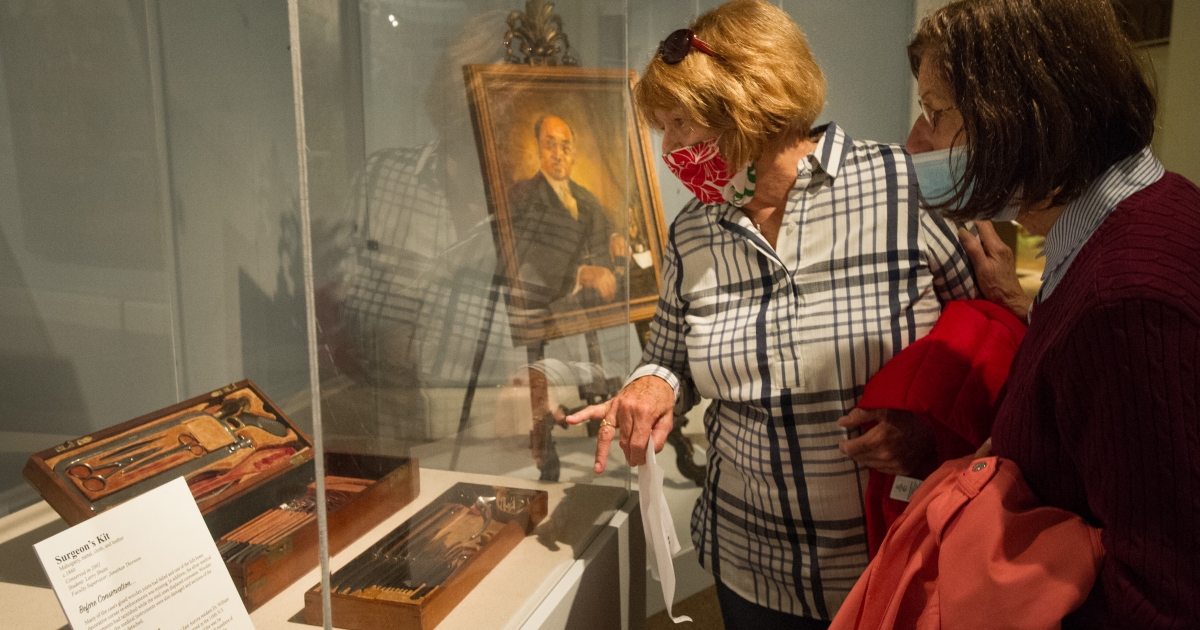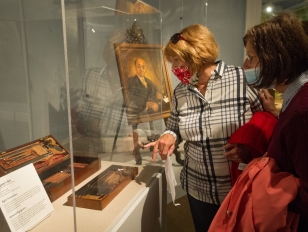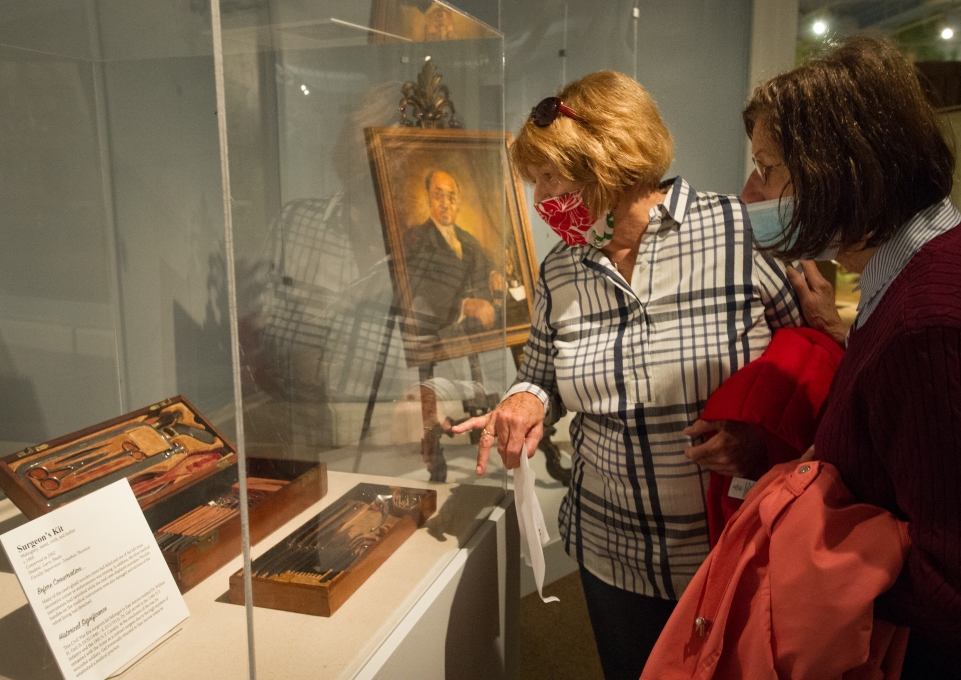
A Civil War surgeon’s kit. A ceramic figurine from the Qing dynasty. Historic books, including one by Galileo from 1632 that reinforced Copernicus’s theory that the earth and other planets rotate around the sun. Western New York art, history, and science lovers can view all these items and more thanks to Buffalo State College’s Patricia H. and Richard E. Garman Art Conservation Department.
Art conservation graduate students and faculty members conserved these pieces and numerous others for area museums and the Buffalo and Erie County Public Library over the past five decades. To help the department celebrate its 50th anniversary this fall, the Burchfield Penney Art Center, the Buffalo History Museum, the Central (downtown) Library, and the Buffalo Museum of Science are all displaying artwork, books, and cultural objects that have undergone conservation treatment.
In the collective exhibition, Fifty Years of Conservation of Cultural Heritage in Western New York, which opened this fall, the cultural institutions have either created a specific exhibit of the conserved pieces or identified ones already on display.
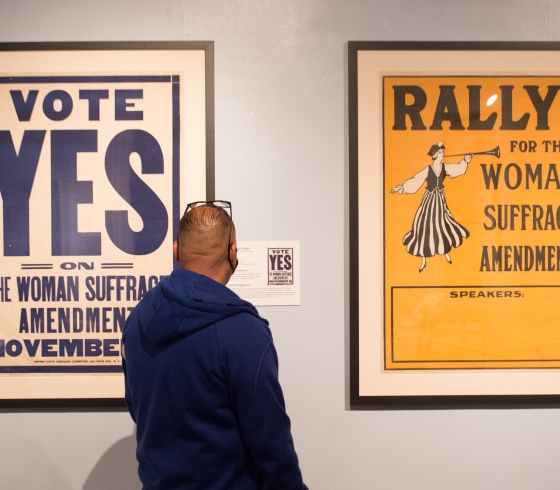
Women's suffrage posters,
1915-1920;
paper and ink
Opened in 1970 as the Cooperstown Graduate Program in the Conservation of Historic and Artistic Works, the Art Conservation Department is affiliated with the State University of New York (SUNY) College at Oneonta and with the New York State Historical Association in Cooperstown. Since its founding, the department has offered a master of arts degree and a certificate of advanced study in art conservation in a three-year graduate program. In 1987, the program relocated to the Buffalo State campus.
“We are thrilled to be celebrating 50 years,” said Patrick Ravines, associate professor and director of art conservation. “And we’re honored that our cultural partners agreed to host this multiple-institution exhibit to showcase the variety of work our students and faculty have painstakingly conserved over the years.”
Initially, Ravines and his staff planned to commemorate the anniversary with a symposium for alumni, a gala, and an accompanying citywide exhibit of conserved works.
“The pandemic changed all that,” Ravines said. “We switched to a virtual symposium that will be held in late October and, of course, had to forgo the gala. Although many cultural institutions were closed in the spring and are now operating at reduced capacity, they still wanted to support our work with the joint exhibition.”
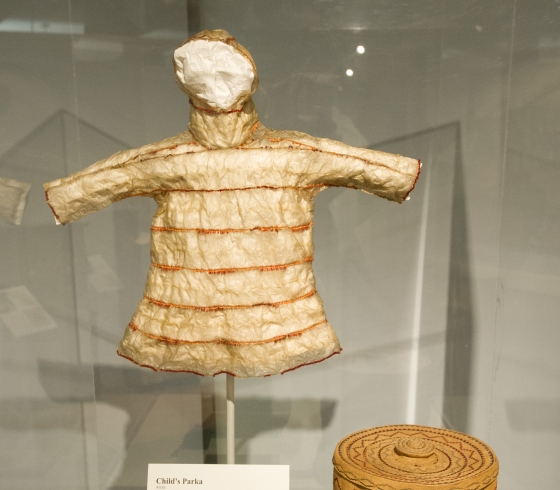
Child's parka, circa 1880;
gut skin, sinew, yarn, and animal hair
In August, the Burchfield Penney kicked off the celebration by opening its exhibit featuring 77 works, including four pieces each from the Albright-Knox Art Gallery and the Seneca-Iroquois National Museum. Along with watercolors spanning the career of the art center’s eponym, Charles E. Burchfield, the exhibit features an early twentieth-century platinum photographic print by Marie Thibaudeau, a painting by Seymour Drumlevitch, and a bronze sculpture by Charles Cary Rumsey, along with a pair of Haudenosaunee women’s moccasins and two nineteenth-century Seneca purses. They will remain on display through November 29.
“This has been such a rewarding exhibit because we have the opportunity to highlight the gem that is Buffalo State’s art conservation program,” said Scott Propeack, the Burchfield Penney’s deputy director. “This is the first time in nine years that a group of Buffalo’s cultural institutions have banded together on a theme. This highlights the value that the program adds to all of our collecting organizations.”
In late September, the Central Library began showcasing 25 conserved items in its first-floor Grosvenor Room; they, too, will remain on view through November 29.
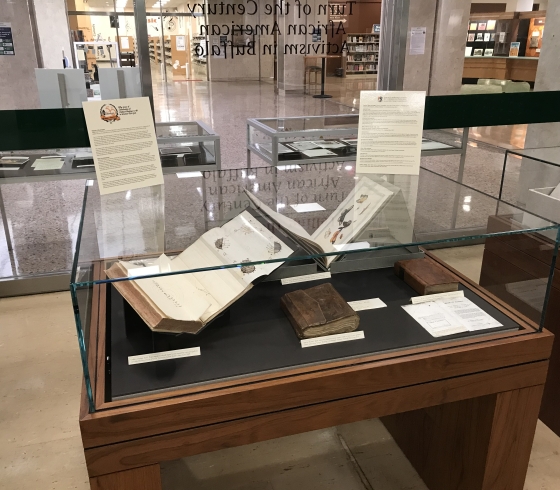
Galileo's text from 1632
“These are pieces our special collections staff found particularly amazing that also show a range of conservation treatments,” said Amy Pickard, the library’s rare book curator.
One piece is the Galileo book, which has fold-out planetary figures in the back and iron-based ink that easily corrode over time. In 2009, when Pickard discussed the book with Judith Walsh, Buffalo State professor emerita of paper conservation, Walsh decided to make it a project for her entire class. They painstakingly re-adhered the detached parts of the figures with Japanese tissue.
Other conserved works the staff chose for the exhibit reflect the talent and attention to detail that art conservation students possess, including an album of 1800s Chinese watercolor paintings, a seventeenth-century Roman Catholic choral manuscript, and a first-edition Book of Mormon.
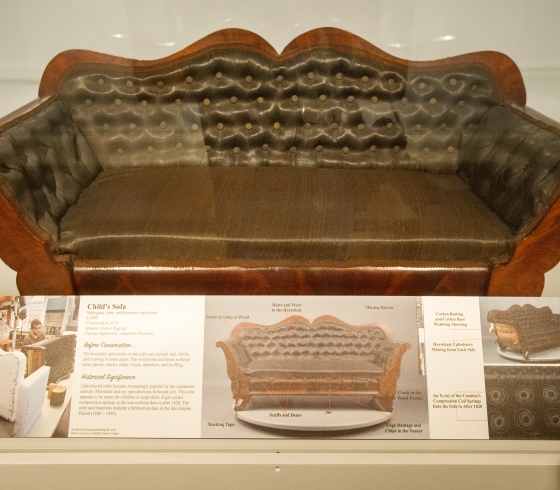
Horsehair sofa, circa 1845;
mahogany, pine, and horsehair upholstery
Meanwhile, the Buffalo History Museum opened its art conservation exhibit of paintings, furniture, and one-of-a-kind objects in a first-floor gallery earlier this month and will keep them up through summer 2021.
The 45-item exhibit represents a sampling of the 160 pieces Buffalo State students and faculty members have conserved over the past 50 years, noted Anthony Greco, director of exhibits and interpretive planning for the history museum. The displayed items range from a 7-by-8-foot painting of a sign shop on Exchange Street created in 1869 to a Larkin Company desk from 1905.
Currently open only Fridays through Sundays, the Buffalo Museum of Science is in the process of creating labels for 12 artifacts currently on display, including an egg of the long-extinct elephant bird that art conservation faculty members radiographed in 2018 to confirm its authenticity. The labels will explain who conserved the items and include before-and-after photos, said Kathryn Leacock, the museum’s director of collections.
“Rather than create a separate exhibit, we wanted to highlight the work that people walk by every day,” Leacock said. “Now, they’ll see the work that went into making them display-worthy. These objects wouldn’t be there without art conservation students and alumni.”
Walter Mayer, senior director of museum collections at the history museum, noted the professionalism of the art conservation department.
“I have always been impressed by the knowledge of the department’s faculty in their field and the caliber and dedication of the students accepted into the program,” he said.
Likewise, Pickard expressed her appreciation for the art conservation department’s work over the years.
The books the library submitted for treatment had worm holes, deteriorated leather, and water damage, among other casualties of time, that are no longer evident.
“Some of these are very expensive to conserve and wouldn’t be covered by our conservation budget,” Pickard said. “The fact that students took these projects on means a great deal to us. We are so fortunate to have the art conservation program here in Buffalo.”
Photos by Bruce Fox, campus photographer.
Photo of Galileo's text courtesy of the Buffalo and Erie County Public Library.
